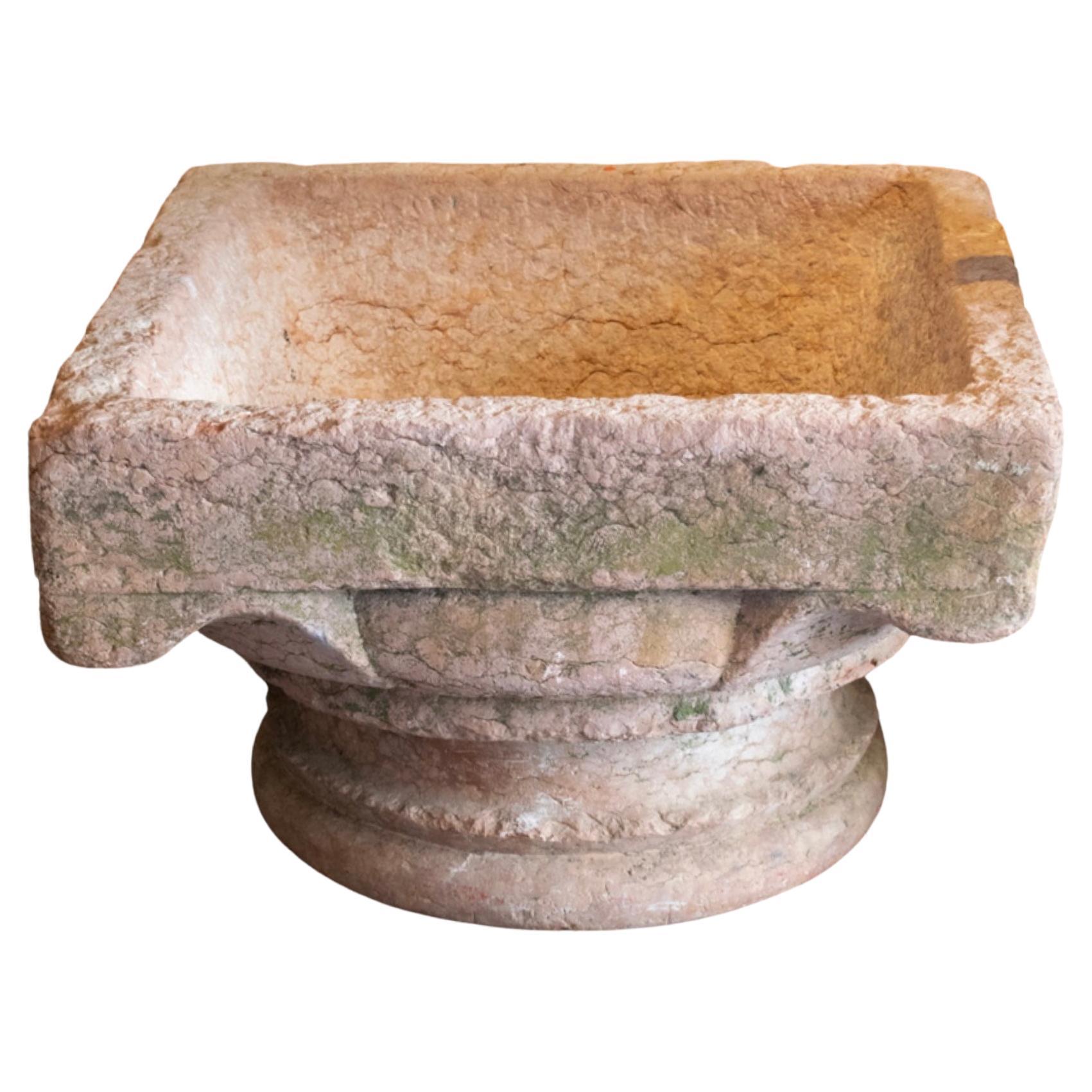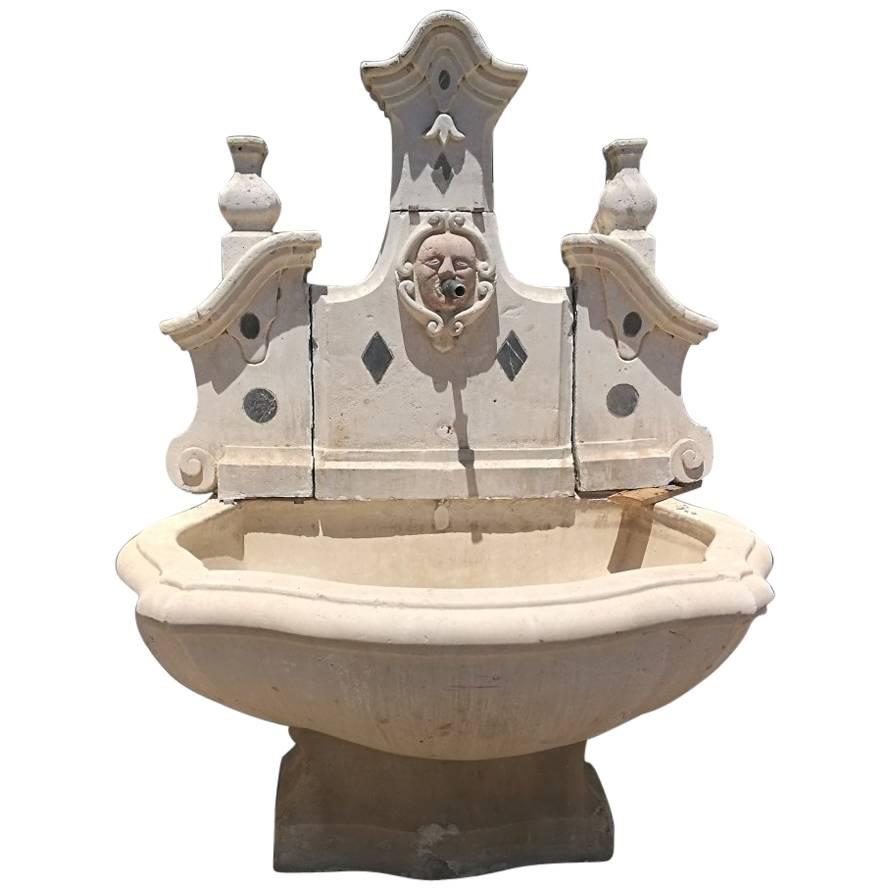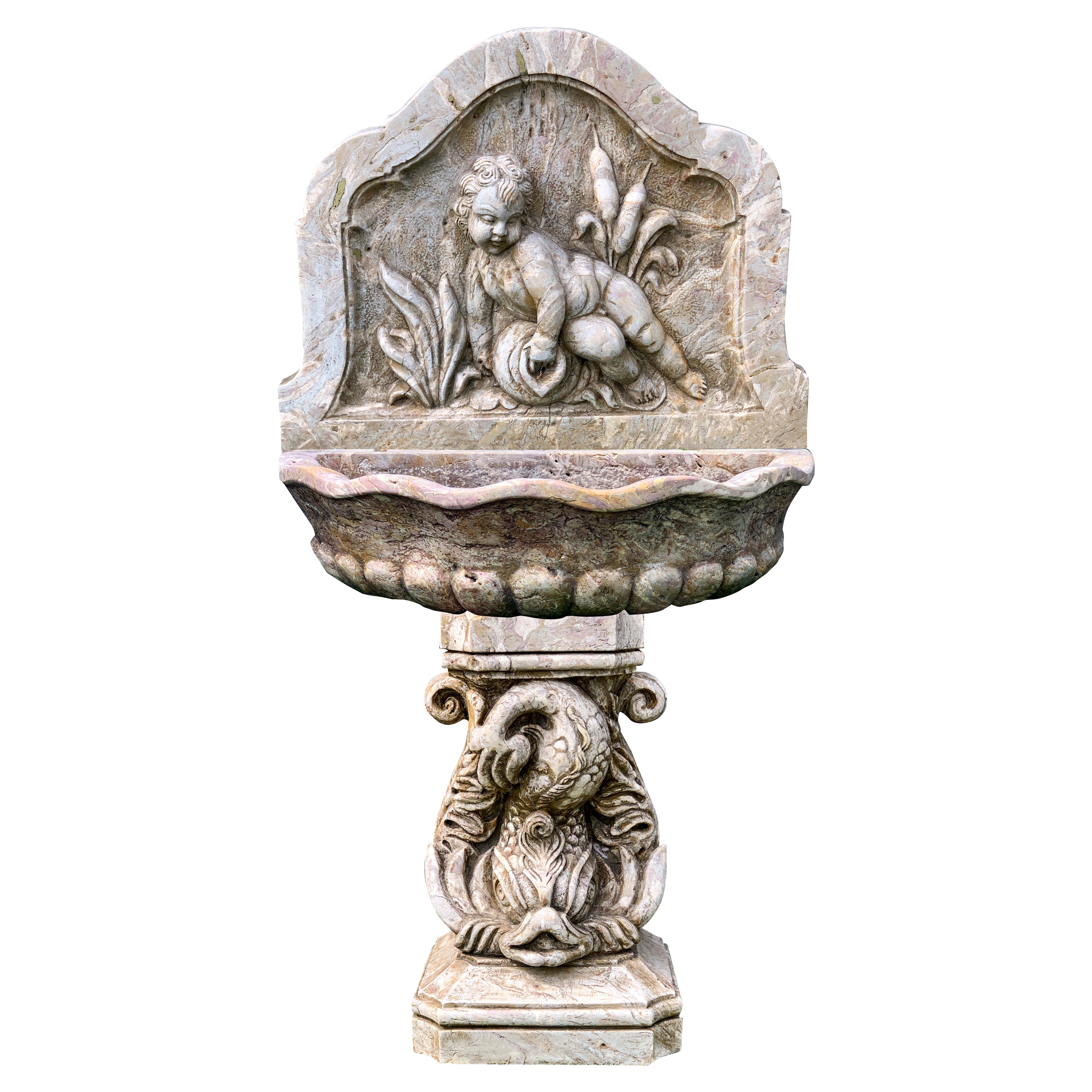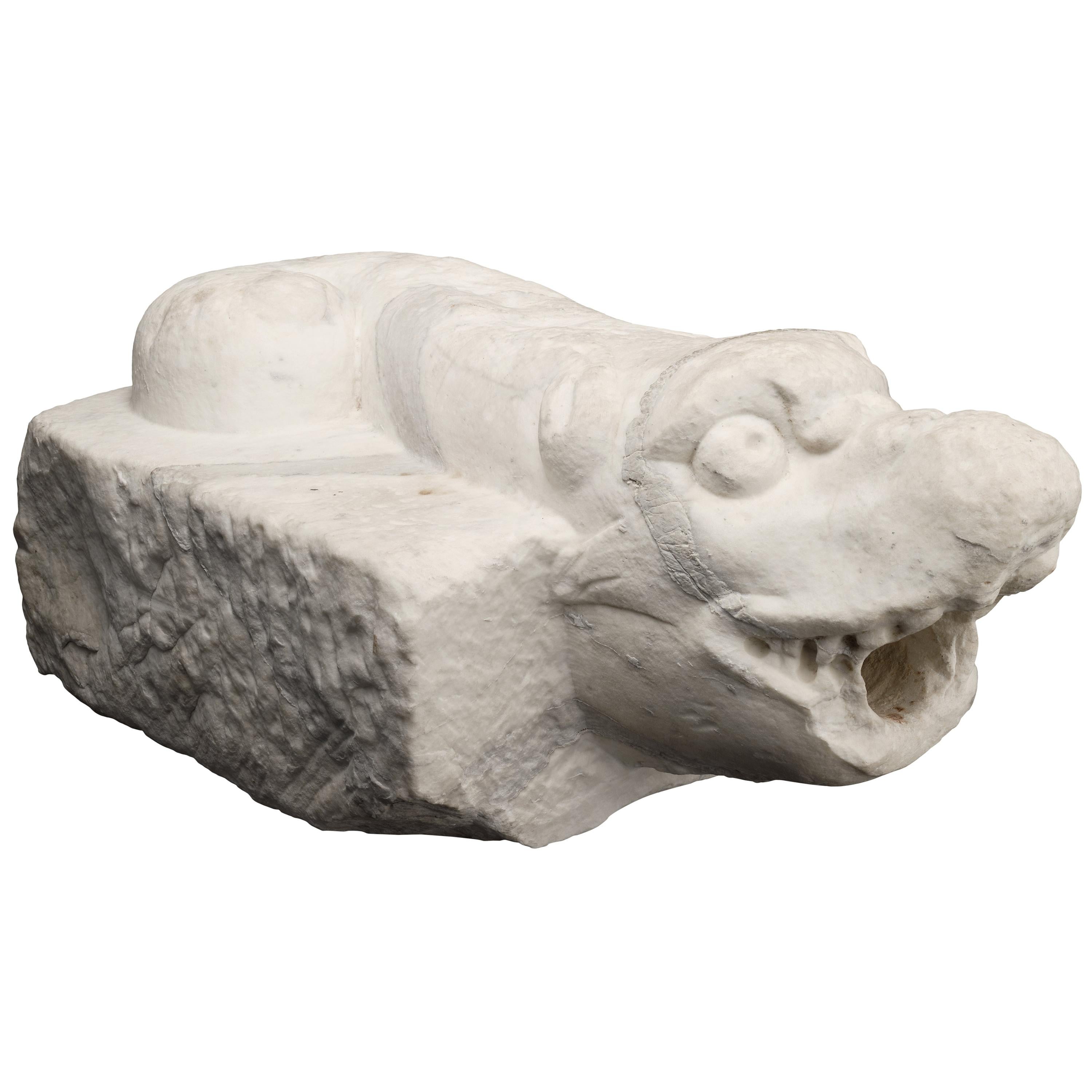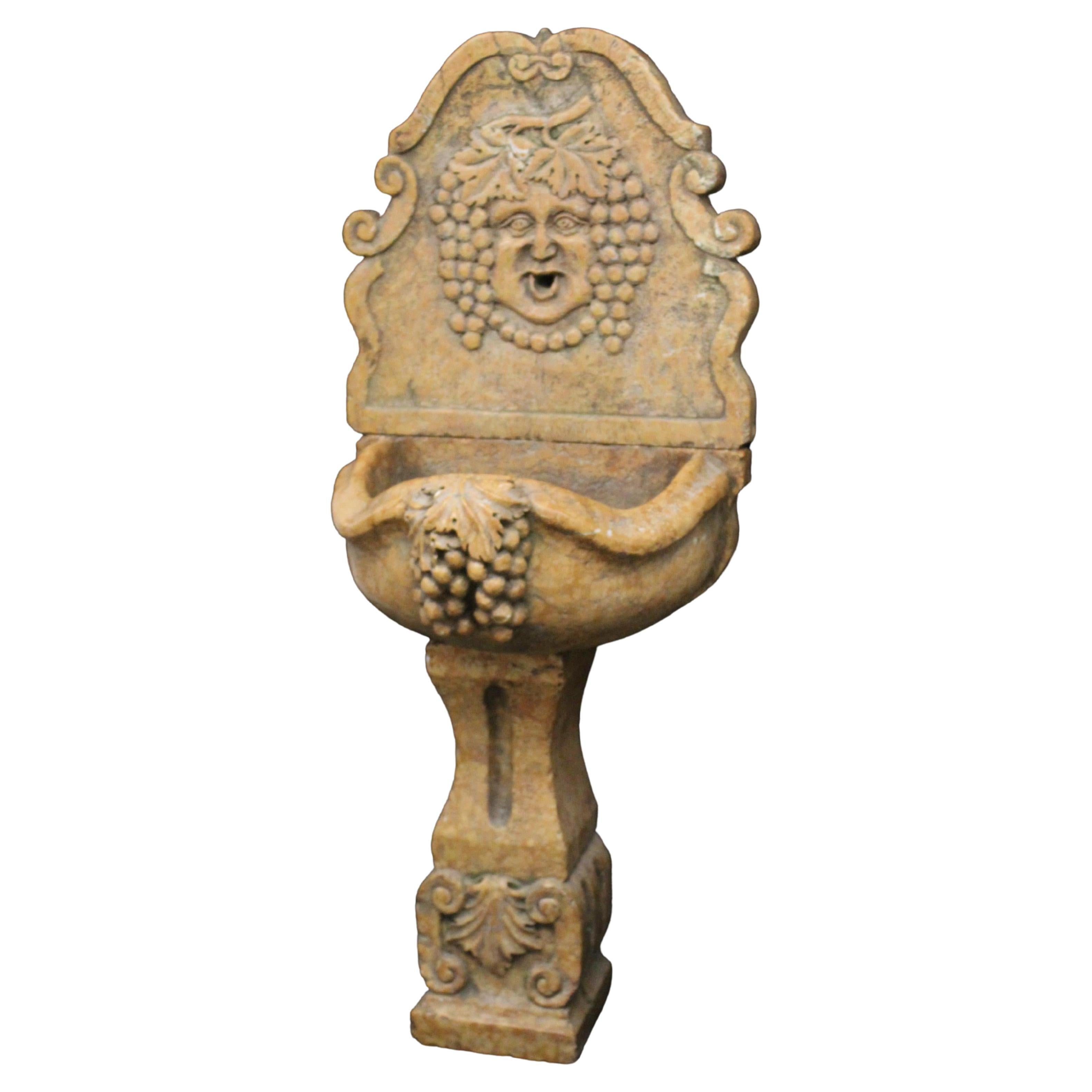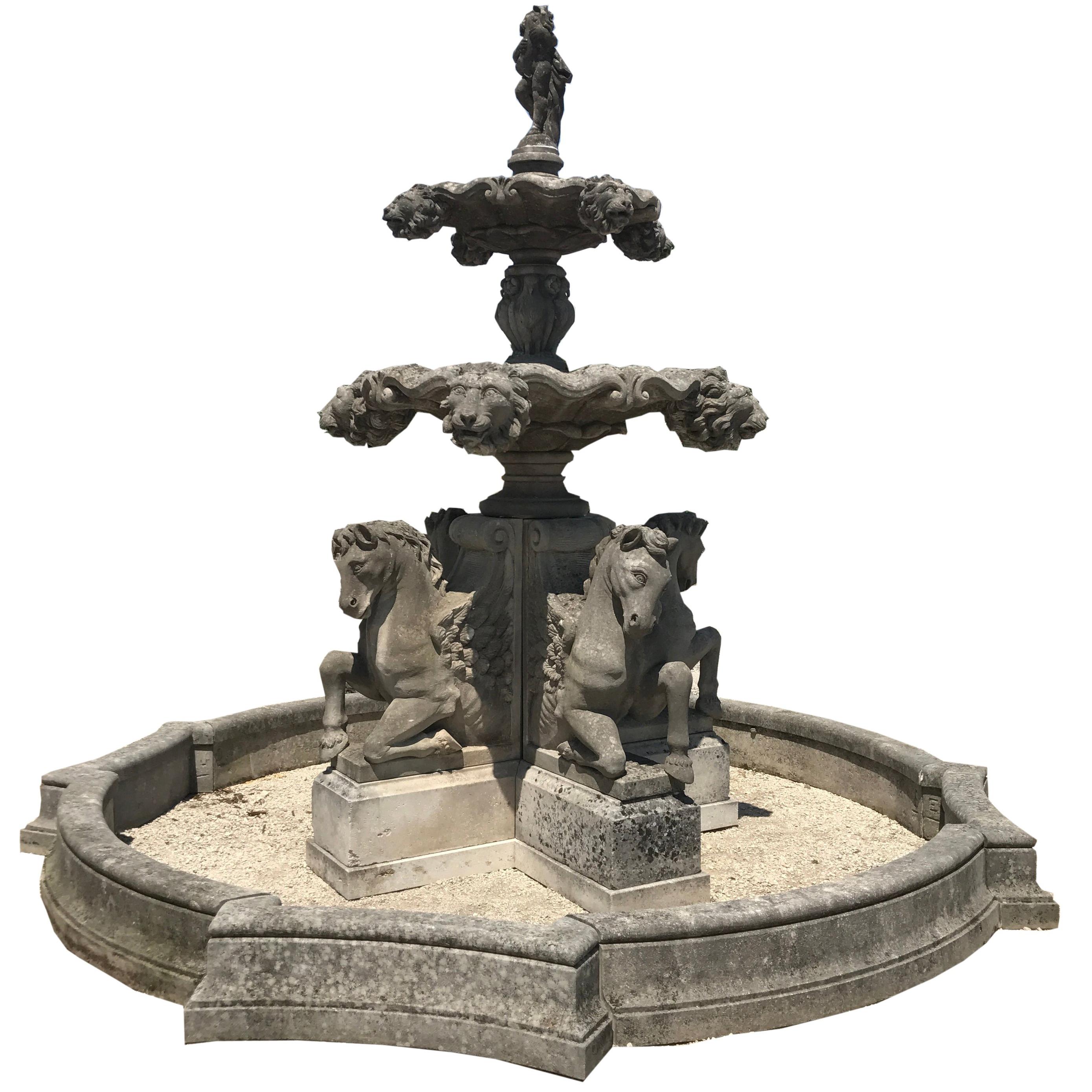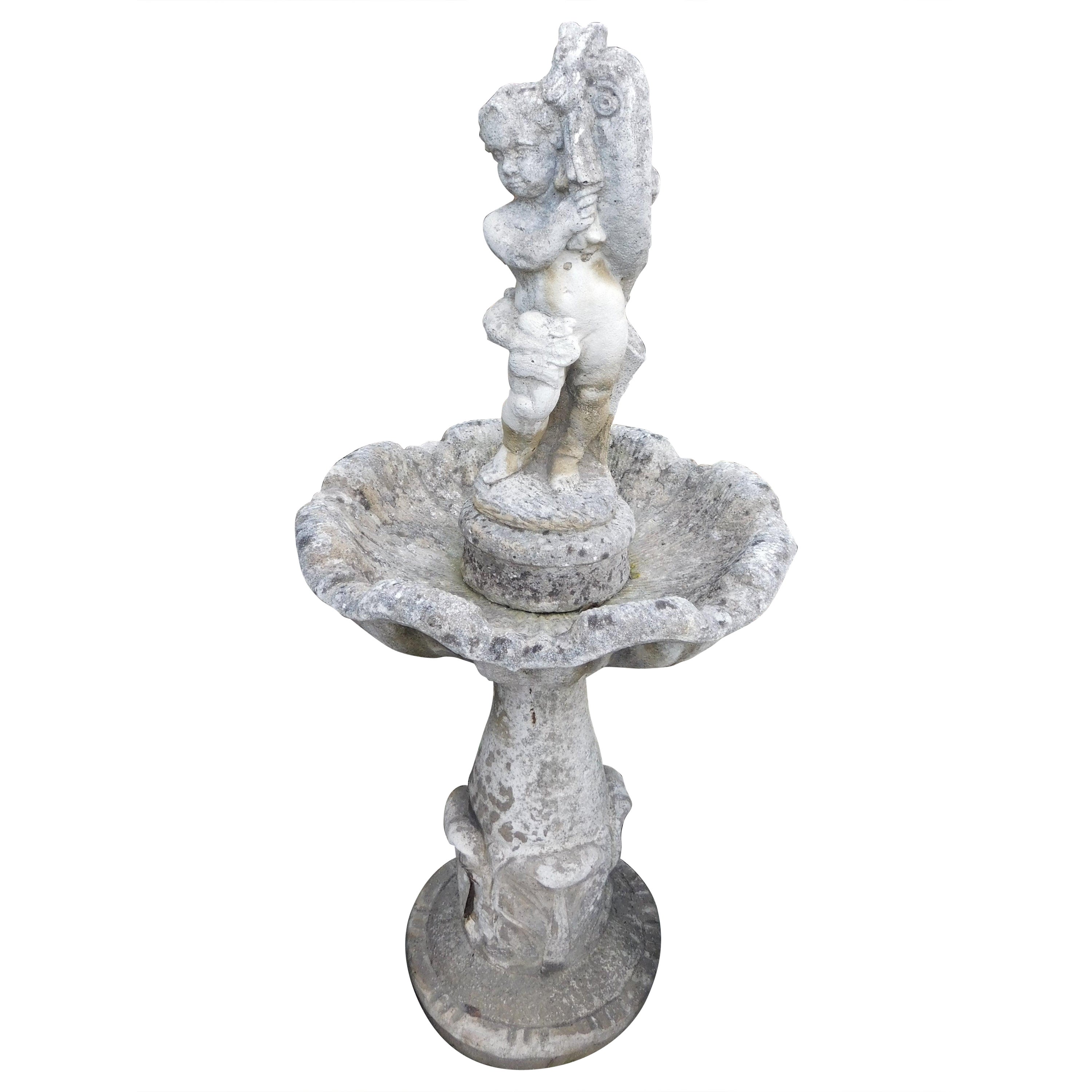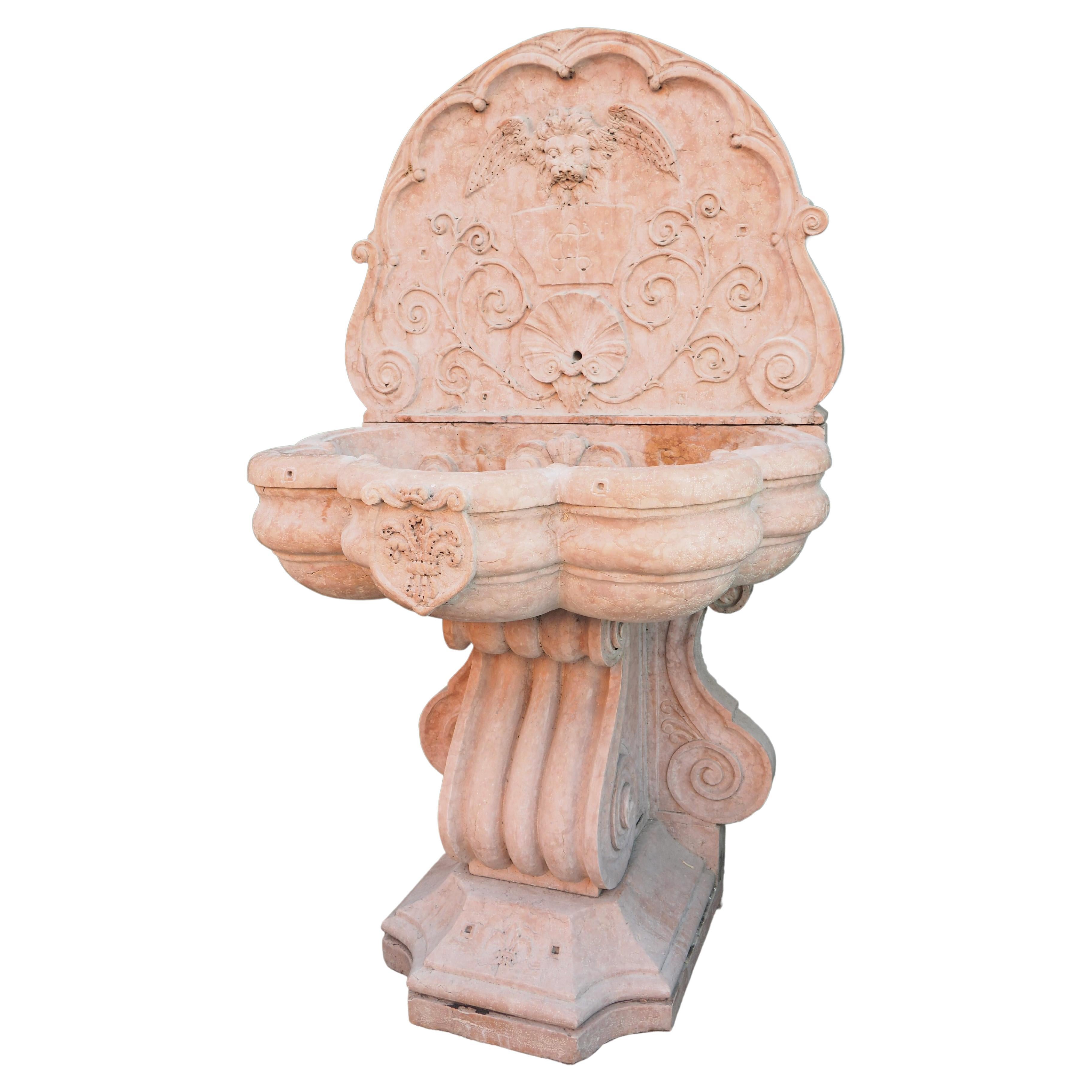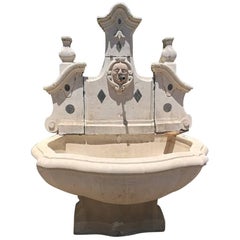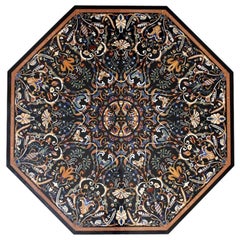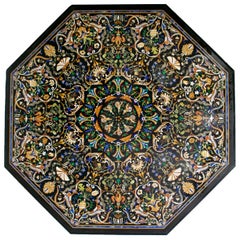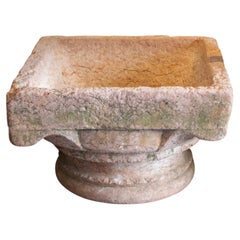
Italian Pietre Dure Mosaic Handmade Aged Marble Stone Fountain
View Similar Items
Want more images or videos?
Request additional images or videos from the seller
1 of 6
Italian Pietre Dure Mosaic Handmade Aged Marble Stone Fountain
About the Item
- Dimensions:Height: 65.36 in (166 cm)Width: 39.38 in (100 cm)Depth: 22.45 in (57 cm)
- Style:Renaissance (In the Style Of)
- Materials and Techniques:
- Place of Origin:
- Period:
- Date of Manufacture:1990
- Condition:Wear consistent with age and use.
- Seller Location:Marbella, ES
- Reference Number:1stDibs: LU3044310704503
About the Seller
5.0
Platinum Seller
These expertly vetted sellers are 1stDibs' most experienced sellers and are rated highest by our customers.
Established in 1996
1stDibs seller since 2017
592 sales on 1stDibs
More From This SellerView All
- 18th Century Stone and Marble Italian Wall FountainLocated in Marbella, ESItalian wall fountain of the 18th century made of stone, with marble incristations making shapes of rhombuses and circles, with a marble mask of reddish verona in the central part, f...Category
Antique Mid-18th Century Italian Fountains
MaterialsStone, Marble
- Octagonal Italian Pietre Dure Hardstone Mosaic Inlay Black Marble Table TopLocated in Marbella, ESHandcrafted reproduction of Italian 1700s ornamental design on black Belgian marble table top. Vases with flowers, clam shells, fishes and a myriad of elements are confirmed by the c...Category
Late 20th Century Italian Renaissance Tables
MaterialsMarble
- Octagonal Italian Pietre Dure Mosaic Inlay Marble Table TopLocated in Marbella, ESOctagonal Belgian black marble table top profusely decorated with Italian Pietre Dure mosaic inlays using green malachite, dark blue lapis, light b...Category
Late 20th Century European Center Tables
MaterialsMarble
- Italian Pietre Dure Semiprecious Hardstones Inlay Black Marble Mosaic TabletopLocated in Marbella, ESHandcrafted reproduction of an Italian 1700s ornamental design on black Belgian marble table top. Vases with flowers, clam shells, fishes and a myriad of elements are confirmed by th...Category
Late 20th Century Italian Tables
MaterialsMarble
- Marble Wall FountainLocated in Marbella, ESMarble wall fountain.Category
Late 20th Century Italian Fountains
MaterialsMarble
$14,823 - 1990 Italian Pietre Dure Gemstones Mosaic Table TopLocated in Marbella, ESMarble tabletop covered in a mosaic of semi-precious hardstones, specially green malachite, as well as yellow travertine, brown Emperador and black Belgian marble. A work of craftsma...Category
Late 20th Century Italian Tables
MaterialsMarble
You May Also Like
- Italian Marble FountainLocated in Dallas, TXSquare shape marble fountain. Originates from Italy. Circa, 1820's.Category
Antique Mid-18th Century Fountains
MaterialsStone
$12,740 - Italian Marble Garden FountainLocated in Essex, MAWith a arched back panel with cherub pouring water from an urn surrounded by cattails over a basin with shaped rim and gadrooned underside supported on a carved dolphin form support ...Category
Antique 1750s Italian Rococo Revival Fountains
MaterialsMarble
- Italian Ancient Marble Sculpture Fountain, Late 16th CenturyLocated in Milano, ITSea monster Carrara marble mouth fountain Italy, late 16th century It measures 13.8 x 31.5 x 18.9 in (35 x 80 x 48 cm) State of conservation: some small evident gaps and widespread signs of wear due to outdoor exposure. The gray marks crossing it do not come from restoration, but are rather the natural veins of the marble. This work has some morphological characteristics typically associated with the iconography of the sea monster: an elongated muzzle, sharp teeth, protruding eyes, elongated ears, and a coiled serpent's tail. An in-depth series of studies on artistic depictions of the sea monster attempted to verify how this symbol evolved in antiquity in the European and Mediterranean contexts and how it gradually changed its image and function over time. The iconography itself is mutable and imaginative and its history is rich with cultural and artistic exchange, as well as the overlapping of ideas. This occurred so much that it is difficult to accurately pinpoint the "types" that satisfactorily represent its various developments. However, we can try to summarize the main figures, starting from the biblical Leviathan and the marine creature that swallowed Jonah (in the Christian version, this figure was to become a whale or a "big fish", the “ketos mega”, translation of the Hebrew “dag gadol”). Other specimens ranged from the dragons mentioned in the Iliad (which were winged and had legs) to "ketos” (also from Greek mythology), the terrifying being from whose Latinized name (“cetus”) derives the word "cetacean". See J. Boardman, “Very Like a Whale” - Classical Sea Monsters, in Monsters and Demons in the Ancient and Medieval Worlds, in Papers presented in Honor of Edith Porada, Mainz am Rhein 1987, pp. 73-84). In Italy the monster underwent yet further variations: it can be found in Etruscan art on the front of some sarcophagi representing the companion of souls, while among the Romans we find the “Pistrice” (cited by Plinio in Naturalis Historia PLIN., Nat., II 9, 8 and by Virgilio in Eneide: VERG., Aen., III, 427), which appeared in the shape of a stylized hippocampus or a very large monstrous cetacean and evolved into a hideous being with a dragon's head and long webbed fins. During the Middle Ages, the sea monster was the object of new transformations: at this time, it is often winged, the head is stretched like a crocodile, the front legs are often very sharp fins - sometimes real paws - until the image merges with dragons, the typical figures of medieval visionary spirituality widely found throughout Europe (on this topic and much more, see: Baltrušaitis, J., Il Medioevo fantastico. Antichità ed esotismi nell’arte gotica, Gli Adelphi 1997). In Italy during the 15th and 16th centuries, the revival of classicism - representative of the humanistic and Renaissance periods - led to a different reading of these "creatures". Indeed, the sea monster was also to find widespread use as an isolated decorative motif, especially in numerous fountains and sculptures where dolphins or sea monsters were used as a characterizing element linked to water (on this theme see: Chet Van Duzer, Sea Monsters on Medieval and Renaissance Maps, London, The British library, 2013). From the morphological point of view, the "sea monsters" of this period are mostly depicted as hybrid figures, in which the body of a mythological or real being (a hippocampus, a sea snake, a dolphin), is joined to a head with a rather indistinct appearance. It was usually characterized by large upright ears, an elongated snout, sharp teeth and globular, protruding eyes; a complex and indefinite figure, both from the symbolic point of view and from that of its genesis. The work we are examining is placed as a cross between the medieval sea serpent and the Renaissance dolphin, with stylistic features which recall the snake as often used in heraldry (such as the "snake" depicted in the coat of arms of the Visconti - the lords and then dukes of Milan between 1277 and 1447 - and which, for some, may be derived from the representations of the “Pistrice” that swallowed Jonah). In the search for sources, Renaissance cartography and in particular woodcuts should not be neglected. See for example the monsters of Olaus Magnus, from the editions of the “Historia de gentibus septentrionalibus” (“History of the peoples of the north”) and the natural histories of Conrad Gesner, Ulisse...Category
Antique 16th Century Italian Renaissance Animal Sculptures
MaterialsCarrara Marble
- Marble FountainLocated in Rome, ITAncient fountain in Verona red marble, 20th century.Category
20th Century Italian Fountains
MaterialsMarble
$2,635 - Tulio Lombardo Style Marble FountainLocated in New Orleans, LAThis marble fountain sculpture in the style of Tulio Lombardo embodies the glory of Renaissance sculpture. Reminiscent of classical portrait busts, a bearded man's face serves as the...Category
Antique 17th Century Italian Renaissance Fountains
MaterialsMarble
- 20th Century Italian Stone Fountain MaskLocated in Milan, ITThis antique stone mask was probably used in a fountain. It is a very decorative Italian antique object. The mask fits as decorative object on a bureau o...Category
Early 20th Century European Classical Roman Animal Sculptures
MaterialsStone
Recently Viewed
View AllMore Ways To Browse
Fountain Used
Garden Water
Used Basin
Garden Fountains Used
Fountain Antique
Fountains Antique
Antique Fountains
Antique Fountain
Garden Basin
Used Garden Fountains
Garden Fountains
Used Fountains
Fountains France
Antique Basins
Antique Basin
Antique Garden Fountains
Antique Garden Fountain
Antique Garden Fountain Garden
